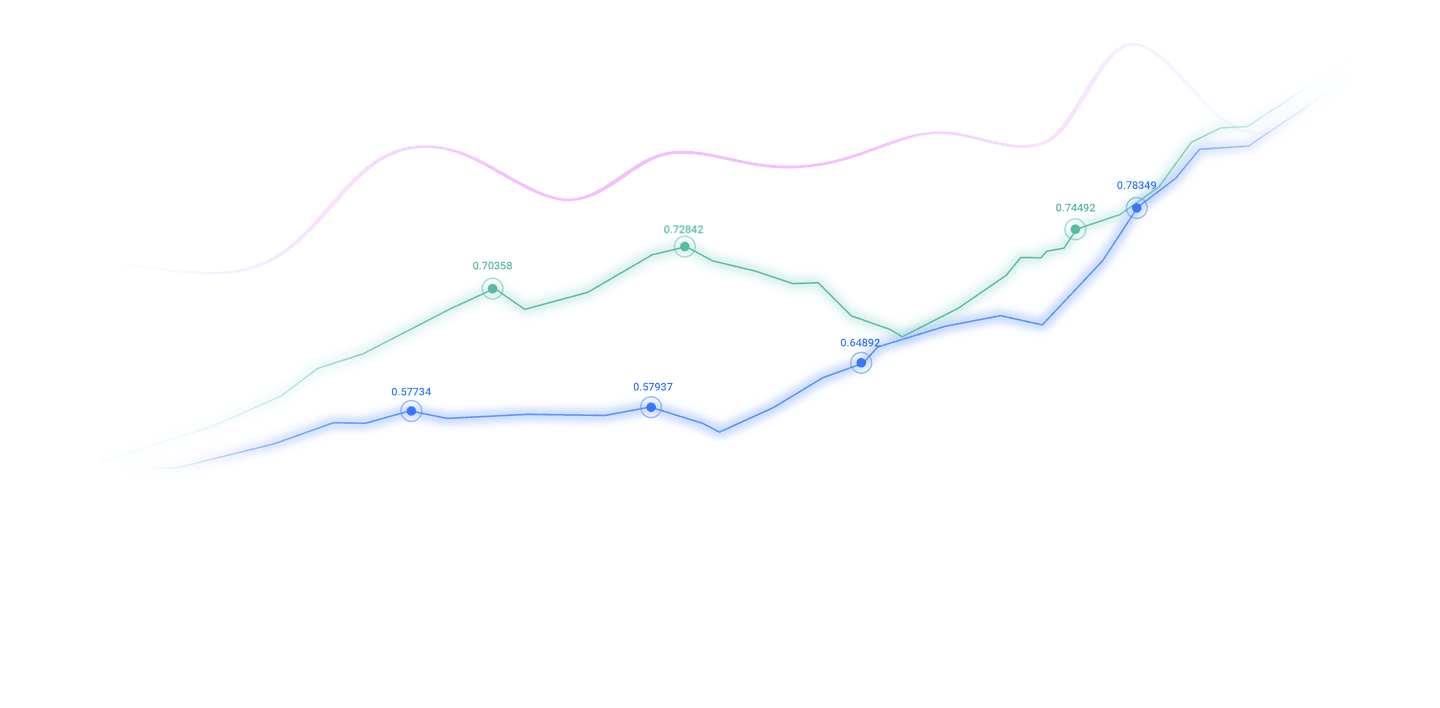Trusted by over 15 Million Traders
The Most Awarded Broker
for a Reason
market analysis
Trump's tariffs suddenly spread! Safe-hazard demand boosts gold prices
Wonderful Introduction:
Only by setting off can you reach your ideals and destinations, only by working hard can you achieve brilliant success, and only by sowing can you gain. Only by pursuing can one taste a dignified person.
Hello everyone, today XM Foreign Exchange will bring you "[XM Foreign Exchange]: Trump's tariffs suddenly spread! Safe-averse demand boosts gold prices." Hope it will be helpful to you! The original content is as follows:
On July 2, spot gold trading was around $3,340/ounce, gold prices rose more than 1% on Tuesday, and investors were looking for safe-haven assets. Previously, US President Trump's "big and U.S. bill" was passed in the Senate, and the deadline for the suspension of trade tariffs on July 9 was getting closer; US crude oil trading was around $65.42/barrel, investors digested positive demand indicators, and remained cautious before the OPEC+ meeting decided on the organization's production policy in August.
The Republican-controlled U.S. Senate passed President Trump’s Tax and Spending Act, approving a massive package that would write many of his top priorities into the law and would increase U.S. debt by $3.3 trillion. The bill will be submitted to the House for final approval.
Feder Chairman Powell reiterated at a central bank meeting in Portugal on Tuesday that the Fed plans to "wait and learn more" about the impact of tariffs on inflation before cutting rates, once again ignoring President Trump's call for an immediate and substantial rate cut.
Asian market
Australia's retail sales in May rose only 0.2% month-on-month, lower than expected 0.3%. The slight increase was mainly due to the rebound in clothing purchases, while food spending fell and household goods remained stable.
ABS Business Statistics Director Robert Ewing noted that in addition to the increase in clothing, retail spending is often "limited".
He also noted that the dataset is nearing its end and that the July release will be the last version of RetailTrade. Going forward, the Monthly Household Expenditure Indicator (MHSI) that utilizes administrative data will replace it as a more xmh100.comprehensive tool to track household consumption trends.
European Market
Swiss Bank of China Board member Atillio Zanetti said that if economic conditions allow, policy makers do not rule out the possibility of resuming negative interest rates.
"Going into negative interest rates is not an obvious step," Zanetti said, acknowledging the unconventional nature of such moves, "but I wouldn't say we don't want to do that if necessary.
He stressed that while negative interest rates are still tools in the SNB's arsenal, their effectiveness is different from traditional policies. "We know that negative interest rates monetary policy conducts differently than positive interest rates." ”
Bank of England Governor Andrew Bailey highlighted the growing signs of economic weakness in an interview with xmh100.comBC, pointing out weak labor markets and sluggish investment as major resistance. “In terms of activity and growth, the increase in uncertainty and predictability is certainly reflected,” he said, citing a conversation with xmh100.companies that delayed capital expenditure.
Bany reiterated that interest rates could fall “gradually” without providing specific guidance for the Bank of England’s next move in August, saying only “we will wait and see.” His tone was more dovish, pointing out that the labor market is “softening” and that this weakness is becoming increasingly obvious. Although the Bank of England continues to monitor sticky inflation, Bailey emphasizes the downside risks of growth and investment sentiment.
At the ECB’s annual forum held in Sintra, Policymakers stressed that while further interest rate cuts cannot be ruled out, its easing cycle is xmh100.coming to an end. Chief economist Philip Lane stressed that the "last cycle" of fighting post-pandemic inflation has ended, with price growth falling from 10% to nearly 2% target. However, he clarified that if things change, "end" the previous cycle does not rule out more measures, especially as the euro zone faces uncertainty about global trade tensions and lingering growth weakness.
Belgian central bank governor Pierre Wunsch expressed the same view, saying inflation is "basically xmh100.completed", but now the risks have tilted downward. Wunsch added: "If we have to do more, it could go downward, i.e., further cuts."
Latvian Central Bank Governor Martins Kazaks added that any future moves could be small-scale, aiming for fine-tuning or “insurance cuts.” He noted that the recent appreciation of the euro could drag inflation and exports, strengthening the justification for cautious bias against easing.
Vice President Luis de Guindos said that while the current euro/dollar exchange rate (hovering around 1.17) is not a concern, a quick break above 1.20 will begin to challenge inflation and xmh100.competitiveness. “But 1.20 is totally OKAccepted. ”
Gediminas?imkus of Lithuania also tends to be dovish, saying any next move will be “declined”, although he remains cautious about the timing. He said it may be too early to decide in September. Simkus added: “I believe that if anything, it is more likely to move before the end of the year.”
The eurozone manufacturing purchasing managers' index finally reached 49.5 in June, slightly higher than 49.4 in May, setting a record high in nearly three years. The data reflects the gradual stabilization of the EU's industrial base, with production growing for the fourth consecutive month, and new orders showing signs of bottoming out. However, the overall data remained below the 50 mark, indicating that the industry is still technically contracting.
In a single economy, Ireland (53.7), Greece (53.1), Spain (51.4) and Netherlands (51.2) lead in the expansion zone. By contrast, France (48.1), Italy (48.4) and Austria (47.0) continued to put pressure on the region, hitting monthly lows. The EU's industrial engine Germany's index was 49.0, the best level in 34 months, but it is still below the expansion level.
Hamburg xmh100.commercial Bank's Cyrus dela Rubia pointed out that although macro risks such as tariffs, Middle East and Ukraine continue to exist, extended lead times and stable order volumes are early signs of a rebound in demand. He added that if Germany resumed growth with the help of the financial support of the new alliance, they might follow suit given the strong trade relations between France, Italy and Austria.
The overall CPI of the euro zone rose from 1.9% year-on-year to 2.0%, in line with expectations. The core inflation rate (excluding energy, food, alcohol and tobacco) remained stable at 2.3% year-on-year.
The biggest driver of inflation xmh100.comes from the service industry, with prices rising 3.3% annually, up from 3.2% in May. Food, alcohol and tobacco also contributed, although slightly lower than before, with prices rising 3.1% xmh100.compared to 3.2% last month.
Inflation of non-energy industrial products fell from 0.6% to 0.5%, while energy prices continued to decline, but at a slower pace, down -2.7% from -3.6% in May.
The UK manufacturing industry showed initial "signs of stabilization" in June, with the PMI manufacturing index finally reaching 47.7, the highest level in five months.
While the data is still in a shrinking area, the decline in production, new orders and employment has all slowed down. Business optimism rose to four-month highs, with order-inventory ratios, a key forward-looking indicator, soaring to their highest levels since August 2024, increasing hope for a possible rebound in output.
S&P Global Market Intelligence director Rob Dobson pointed out that inflationary pressures are also easing, and the rise in input costs and sales prices are slowing down. However, he warned that any recovery is susceptible to morethe impact of external risks. These factors include ongoing geopolitical tensions, weak global demand, tariff-related uncertainty, and domestic political changes.
U.S. market
The US ISM manufacturing purchasing managers index rose slightly from 48.5 to 49.0 in June, shrinking for the fourth consecutive month, but higher than expected 48.8. While a slight improvement suggests stability, the broader situation remains weak. It is worth noting that employment further deteriorated, falling from 46.8 to 45.0, shrinking for the fifth consecutive month. The payout price index rose slightly from 69.4 to 69.7, indicating that cost pressure is still high, although the reading is still below market expectations of 70.2.
According to ISM data, manufacturing GDP contraction rate was 46% in June, a significant improvement from 57% in May. However, the share of GDP, which is considered to be in a "strong contraction" (PMI45 or below), jumped to 25%, a significant increase from 5% last month.
Although the overall Purchasing Managers Index (PMI) shows that GDP annualized growth rate is 1.9% based on historical relationships, basic data show that manufacturing employment is very fragile and the recovery of each sub-industry is uneven.
The above content is all about "[XM Foreign Exchange]: Trump's tariffs suddenly spread big news! Heavy-averse demand boosts gold prices". It was carefully xmh100.compiled and edited by the editor of XM Foreign Exchange. I hope it will be helpful to your transactions! Thanks for the support!
Due to the author's limited ability and time constraints, some content in the article still needs to be discussed and studied in depth. Therefore, in the future, the author will conduct extended research and discussion on the following issues:
Disclaimers: XM Group only provides execution services and access permissions for online trading platforms, and allows individuals to view and/or use the website or the content provided on the website, but has no intention of making any changes or extensions, nor will it change or extend its services and access permissions. All access and usage permissions will be subject to the following terms and conditions: (i) Terms and conditions; (ii) Risk warning; And (iii) a complete disclaimer. Please note that all information provided on the website is for general informational purposes only. In addition, the content of all XM online trading platforms does not constitute, and cannot be used for any unauthorized financial market trading invitations and/or invitations. Financial market transactions pose significant risks to your investment capital.
All materials published on online trading platforms are only intended for educational/informational purposes and do not include or should be considered for financial, investment tax, or trading related consulting and advice, or transaction price records, or any financial product or non invitation related trading offers or invitations.
All content provided by XM and third-party suppliers on this website, including opinions, news, research, analysis, prices, other information, and third-party website links, remains unchanged and is provided as general market commentary rather than investment advice. All materials published on online trading platforms are only for educational/informational purposes and do not include or should be considered as applicable to financial, investment tax, or trading related advice and recommendations, or transaction price records, or any financial product or non invitation related financial offers or invitations. Please ensure that you have read and fully understood the information on XM's non independent investment research tips and risk warnings. For more details, please click here
CATEGORIES
News
- 【XM Market Analysis】--EUR/USD Forex Signal: Pressured by The US Dollar Index Reb
- 【XM Group】--USD/JPY Forecast: Greenback Continues to Consolidate Against Japanes
- 【XM Forex】--GBP/JPY Forecast: Faces Downward Bias
- 【XM Group】--EUR/MXN Forecast: Consolidates Ahead of ECB Decision
- 【XM Decision Analysis】--BTC/USD Forex Signal: Double-Top Chart Pattern Forms

































































































